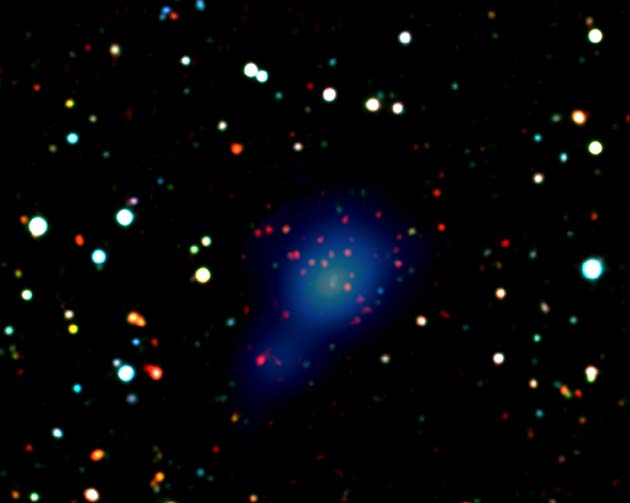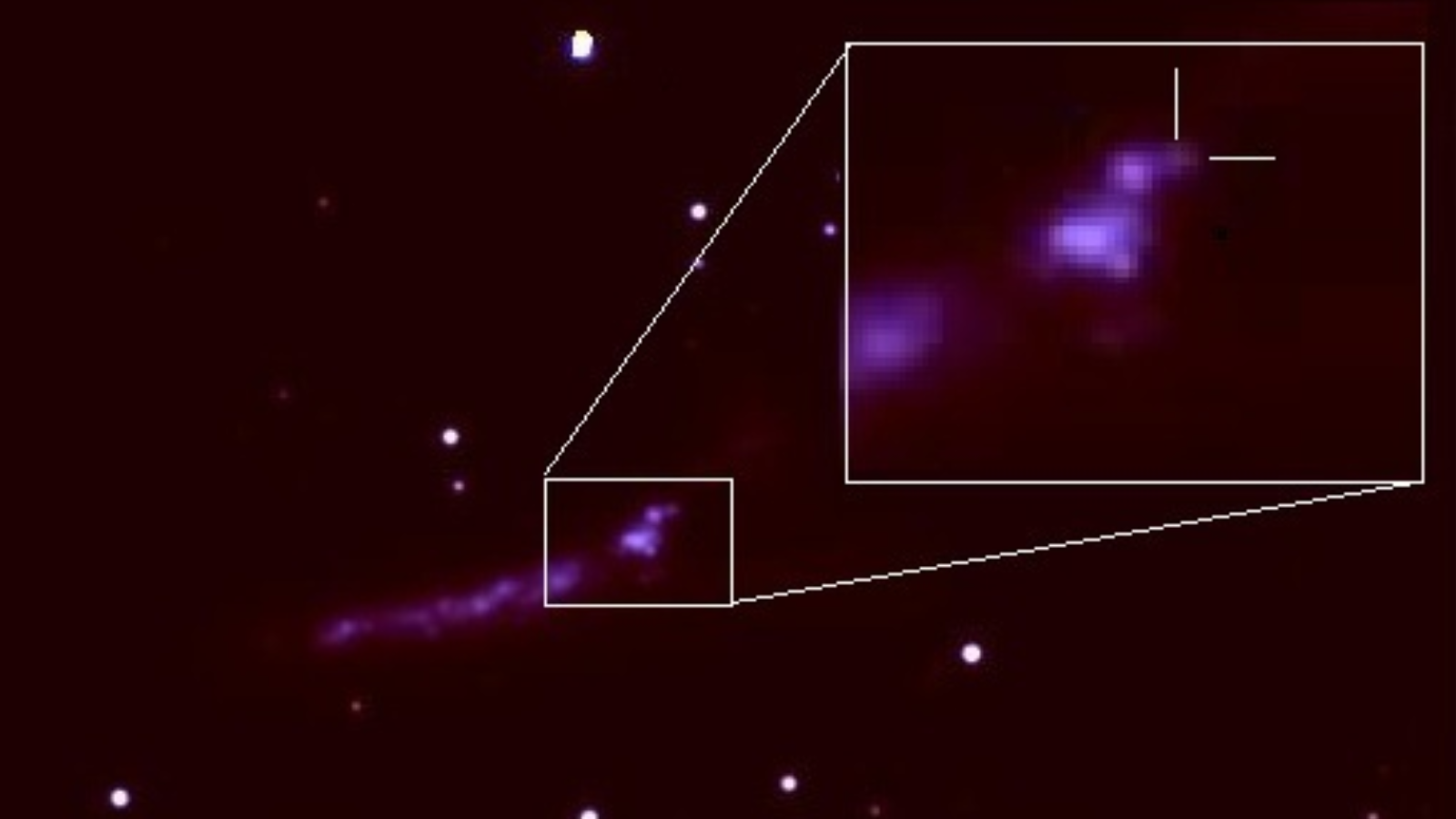Maturity of Farthest Galaxy Cluster Surprises Astronomers

CALGARY, ALBERTA--A ghostly blue blob amid a swarm of red dots in a new cosmic image is the superhot intergalactic gas permeating the space within the most distant cluster of galaxies found to date.
Located nearly 10 billion light-years away, Cluster XMMXCS 2215-1738 is being hailed by its discoverers as a tantalizing glimpse of what galaxy clusters were like at their earliest stages of formation.
Individual galaxies have been detected at greater distances. But the newly discovered cluster contains several hundred galaxies bound together by mutual gravitational attraction.
The finding was announced here this week at the 208th meeting of the American Astronomical Society.
Young and old
A light-year is the distance that light can travel in a year, so the light from this cluster took almost 10 billion years to reach us. Since the universe is thought to be 13.7 billion years old, the record-setting cluster must have formed when the universe was relatively young.
"Yet this distant cluster appears to be full of old galaxies," discovery team member Adam Stanford noted with amazement.
Breaking space news, the latest updates on rocket launches, skywatching events and more!
Stanford and his colleagues said the total mass of the cluster is enough to contain 500 trillion stars comparable in mass to our Sun. That's a surprising stellar mass for a galaxy cluster to have achieved at such an early era in the evolution of the universe, said Stanford, a researcher at the University of California, Davis, and at Lawrence Livermore National Laboratory.
'Hot' finding
Stanford and the other members of the XMM Cluster Survey, an international team of astronomers, made their discovery by combining X-ray observations from the European X-ray Multi Mirror (XMM) Newton satellite with optical observations using the 10-meter W.M. Keck telescope on Mauna Kea, Hawaii.
Intergalactic gas in the record-setting cluster glows with powerful x-ray emissions at a temperature of 10 million degrees, said team member Robert Nichol, from the University of Portsmouth, England. That's what made the detection of this distant cluster possible, says Nichol. It also makes this a "hot" find in every sense of the word, since this is the hottest cluster yet found at an extreme distance.
But it doesn't end there. Within the patch of the universe covered by the Cluster Survey, Nichol says they can see hints of more tan 1,600 additional galaxy clusters waiting to be confirmed and studied in detail.
"The total number of clusters depends on the amount of dark matter there is," Nichol said. "So this will give us a wonderful measure of how much dark matter there is in the universe."
Dark matter is mysterious stuff that astronomers say must exist, based on the fact that there is not enough regular matter in galaxies to keep them from flying apart.
More discoveries
Extremely distant galaxy clusters like these, Stanford said, give astronomers a great chance "to study galaxy formation by looking at what they were like in the earlier stages of their lifespan."
Stanford is also a team member for a separate galaxy-cluster study that presented its results at the same meeting. Co-led by Mark Brodwin of NASA's Jet Propulsion Laboratory in Pasadena, this team used the Spitzer Space Telescope to discover a total of almost 300 galaxy clusters and groups (galaxy "groups" contain far fewer members than the average galaxy cluster).
Nearly 100 of their finds are at immense distances of over 8 billion light-years.
"The Spitzer Space Telescope sees the thermal radiation of these galaxy clusters at infrared wavelengths," Brodwin explained. "Now, we'll be able to use this large sample of clusters as a laboratory to study the evolution of galaxies."
- Nebulas: The Best of Your Amazing Images
- Bevy of Black Holes Found in Galaxy Cluster
- Ongoing Growth: Galaxies Grab Intergalactic Gas
- VOTE NOW: Most Amazing Galactic Images Ever
